Image
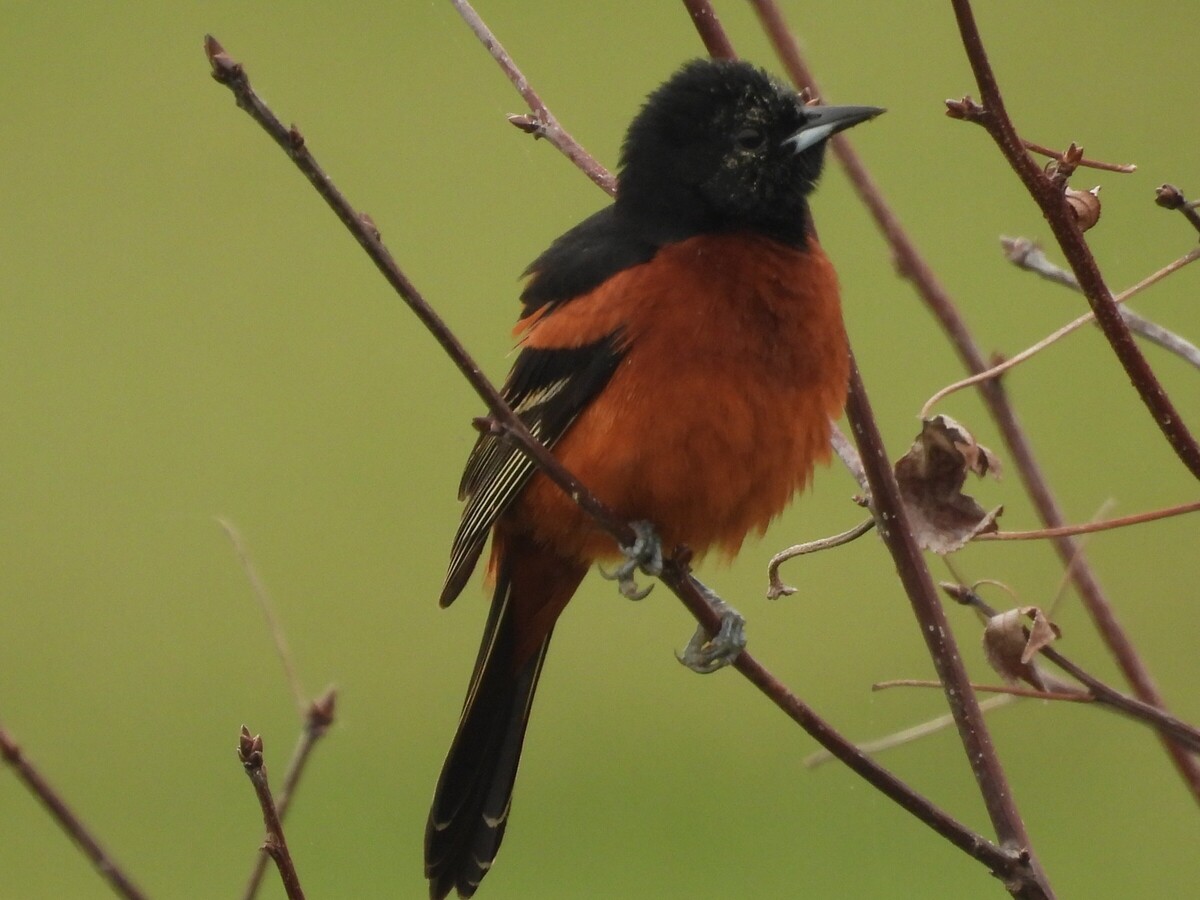
by Mike Strzelecki
Orioles return to the Boyertown area in late April and May, and do so with panache. Their booming, trumpet calls can be heard echoing across valleys. They flash splendid colors as they soar through meadows, battling for mates and searching for food. And a flaring-orange male Baltimore Oriole perched atop a tall tree appears like a torch. The oriole is truly a crowd-pleaser.
There are two kinds of orioles common to the Boyertown area. The first is the Baltimore oriole. This is the traditional bird that one pictures when hearing “oriole.” The adult male Baltimore oriole is dazzling orange, almost neon, with a black head and wings. These are the same colors as the heraldic crest of the Baltimore family, from England, which led to their name. You probably know it from the Baltimore Orioles major league baseball team mascot. Female Baltimore orioles display more subdued colors.
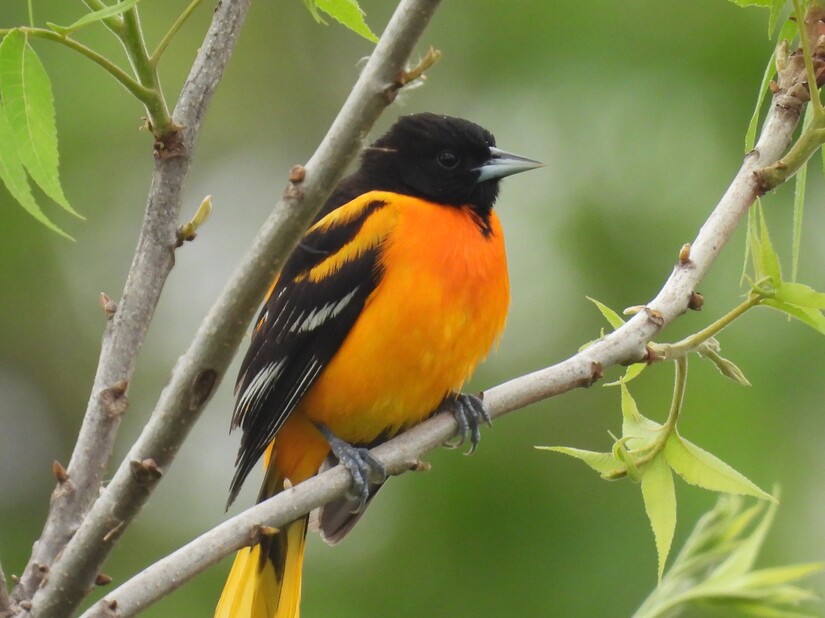
Orchard orioles are a bit smaller than Baltimore orioles, and instead of the showy orange, they are a more conservative reddish-chestnut color with similar black head and wings. Females are greenish-yellow with no solid black. They are tougher to spot in the wild since they do not flash colors like the Baltimore orioles, but they have all of the elegance and regality as their cousins.
Orioles dwell in open forests and areas of scattered trees. They can be most easily seen in fields that back to a forest or in tree groves like orchards. Look for them in parks that have wide open space, and also around water bodies. Locally, French Creek State Park and Lake Ontelaunee are great places to see orioles, but I have also seen them in town and also in fields along the Manatawny Creek. The key is to look up as they tend to find comfort and safety in tree canopies.
Orioles breed and nest in the Boyertown area every summer. They build tightly woven hanging nests made from grasses, spanish moss, and other available plants. The nests are built by the females and usually hang about 30 or more feet off the ground. While the females tend to the nest, the male will perch nearby singing loudly as a protective show of force. Females lay four or five eggs in a clutch and it usually takes two weeks after hatching until the young leave the nest. Here are a few images of a female Baltimore oriole building a nest while the male stands sentinel nearby.
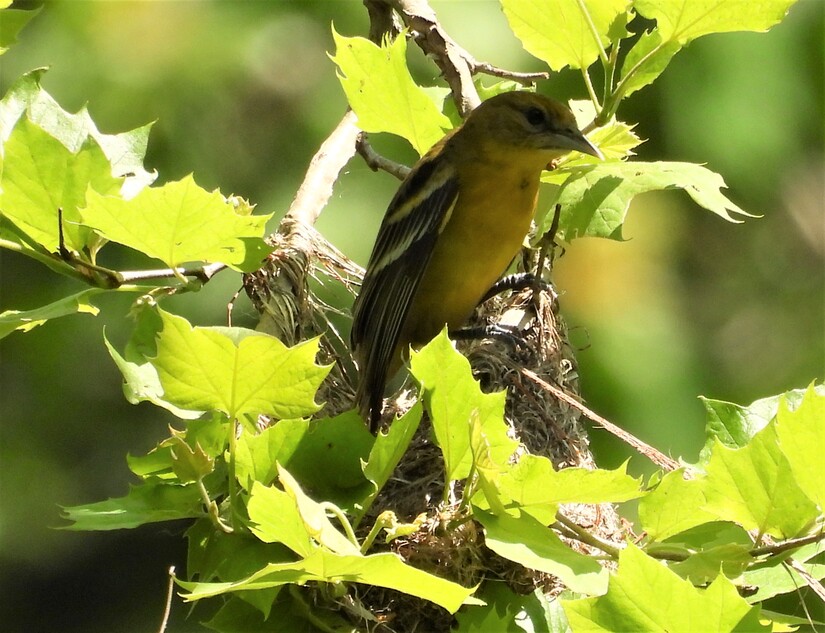
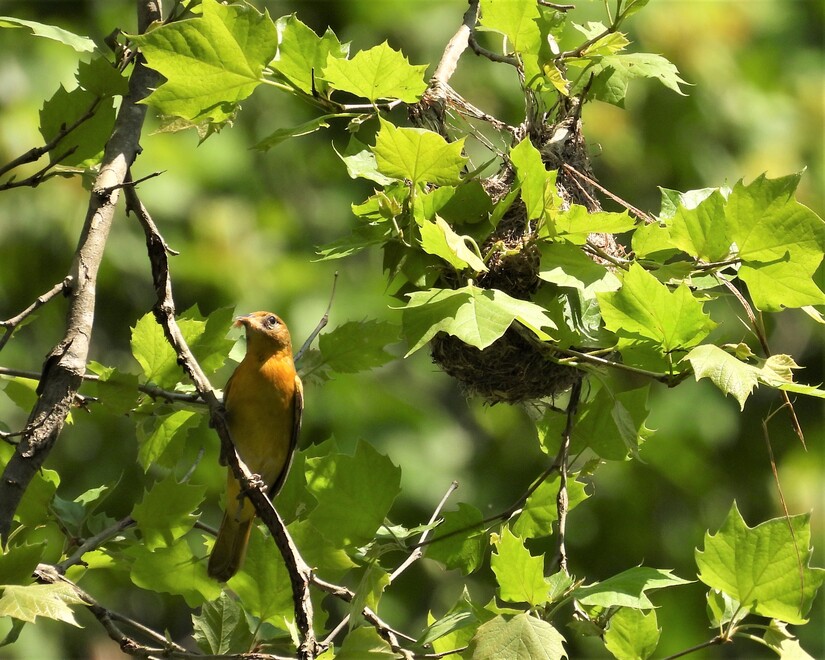

Spring is the best time for viewing orioles. This is when they are most active (nest building, attracting mates, fighting off other males), and also when they sing the most, which is a surefire way to spot an oriole. Orioles can sometimes be attracted to back yards. While they do consume bugs and other terrestrials, they have a particular penchant for fruit. Bird watchers have had success attracting orioles by laying sliced oranges on platforms in their yard, or even lumps of grape jelly. For orioles, the darker the fruit, the tastier. Planting fruits like raspberries or crabapples have been known to attract orioles. Orioles have an unusual method of eating, called gaping. They stab their closed bill into a piece of soft fruit, open it to create a gap in the fruit, then use their tongues to lap up the juice from the separated fruit.
Orioles tend to be easier to view than many of the other colorful migratory birds passing through the Boyertown area in spring. Seeing an oriole - even a flash of one scudding across an open meadow - is a thrill for birders and non-birders.
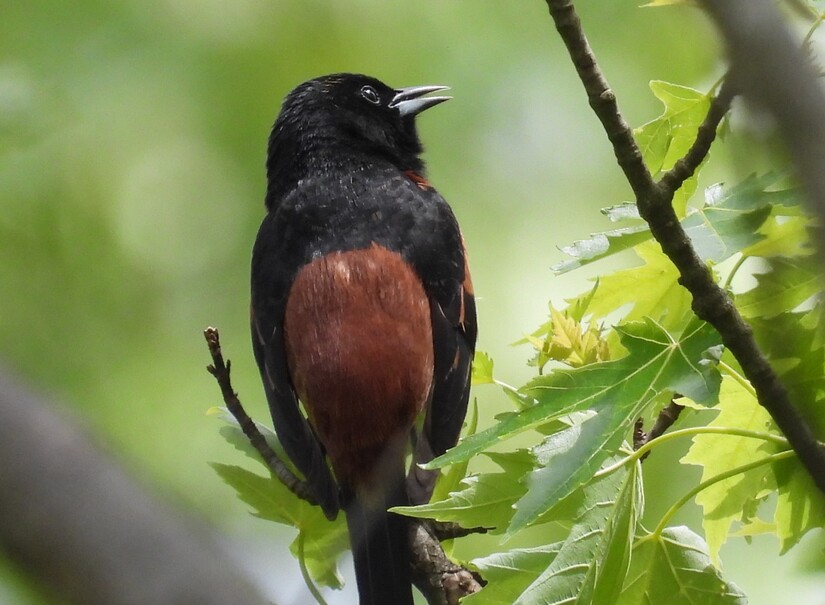
Mike Strzelecki is a freelance travel and outdoor writer, and 1981 graduate of Boyertown Area Senior High School. He writes from his house in Baltimore, Maryland. In his spare, he joins his wife on adventures around the country observing and photographing birds.